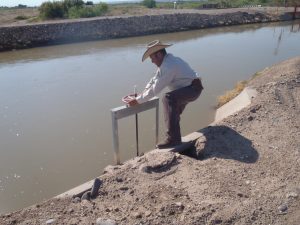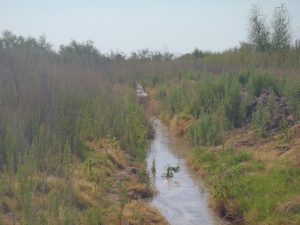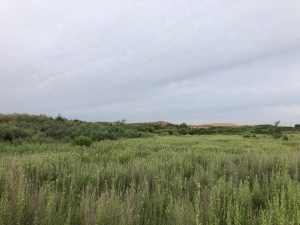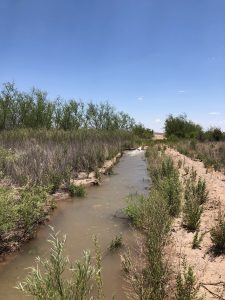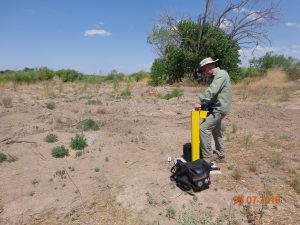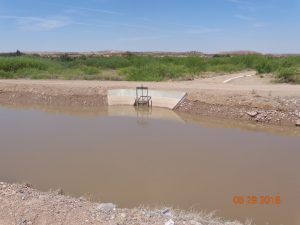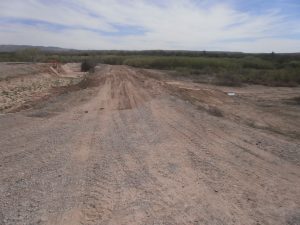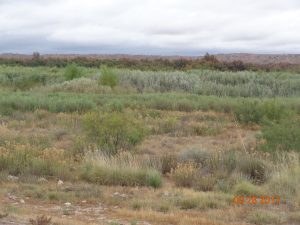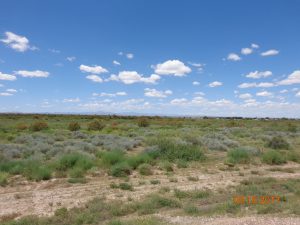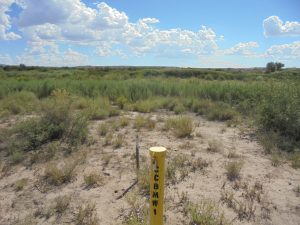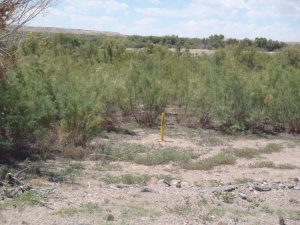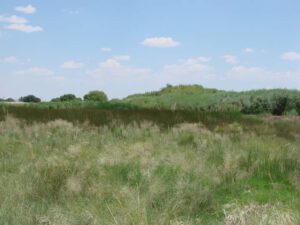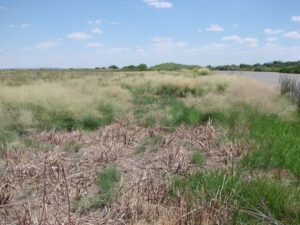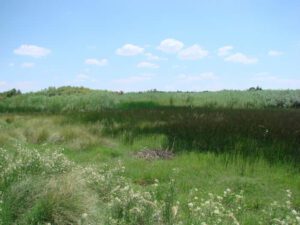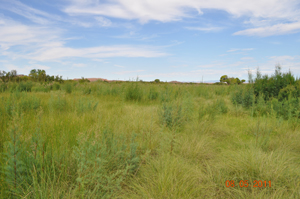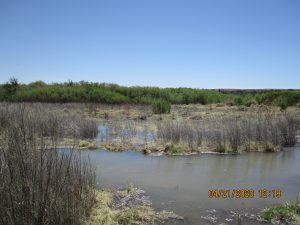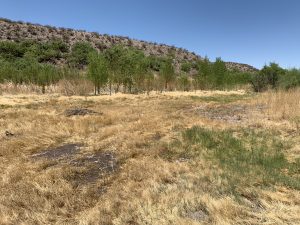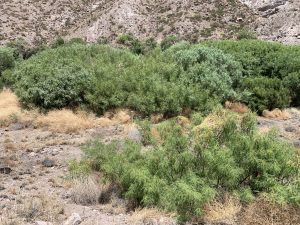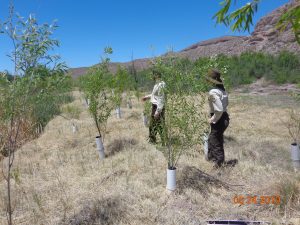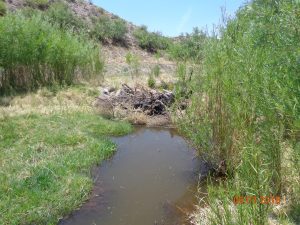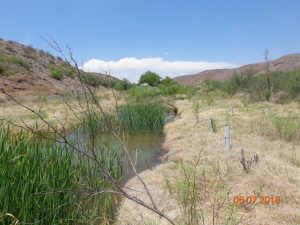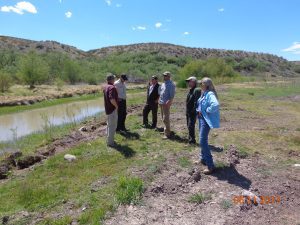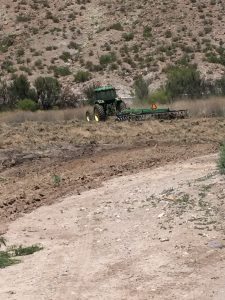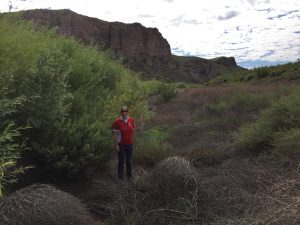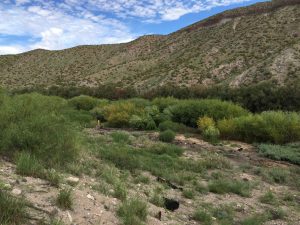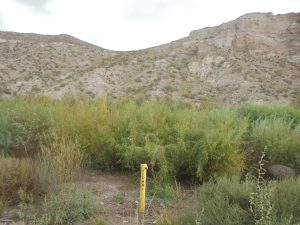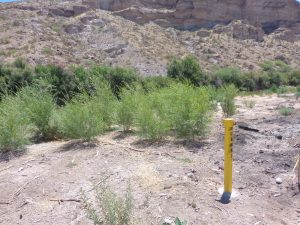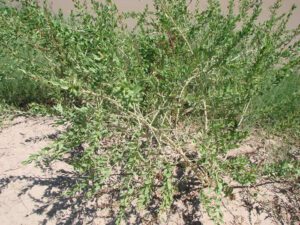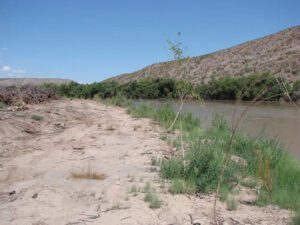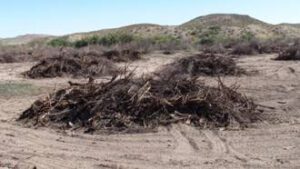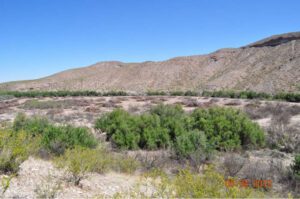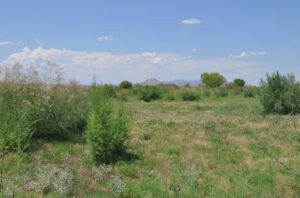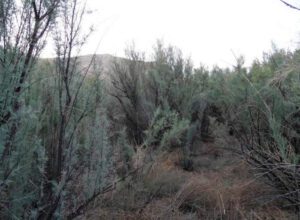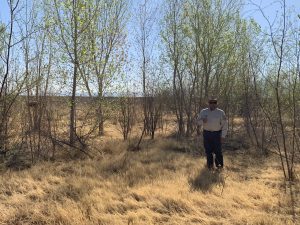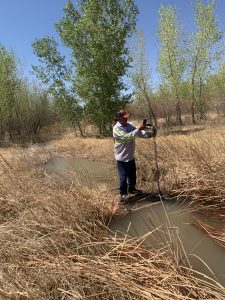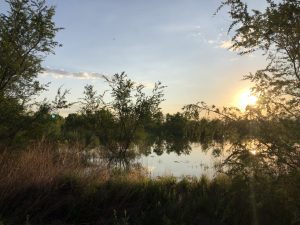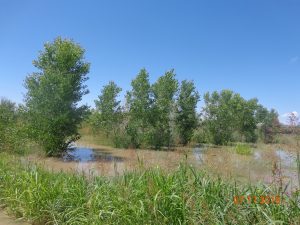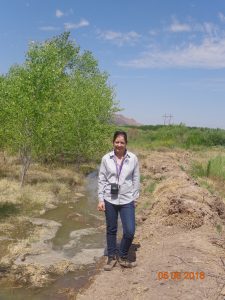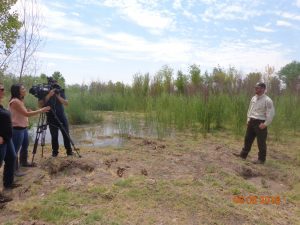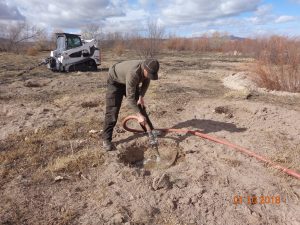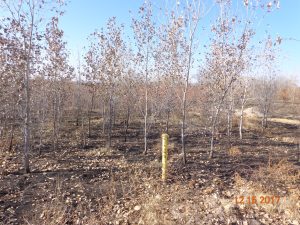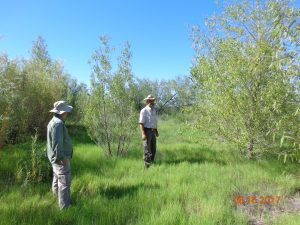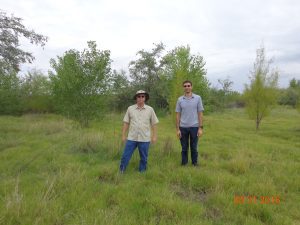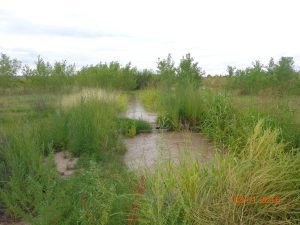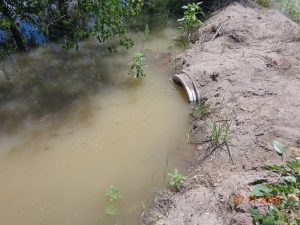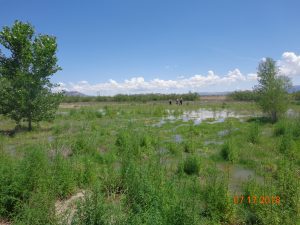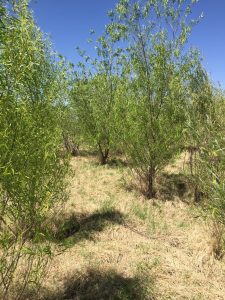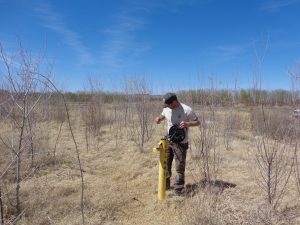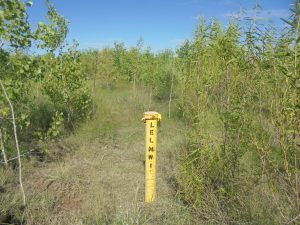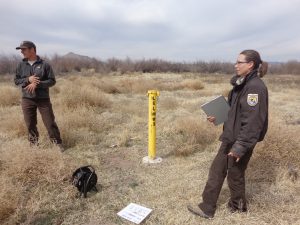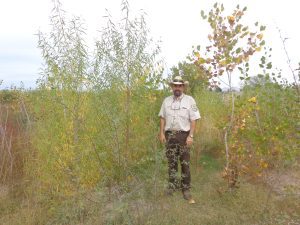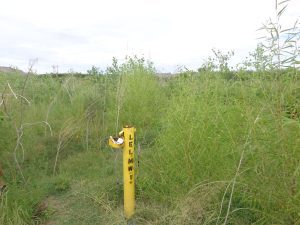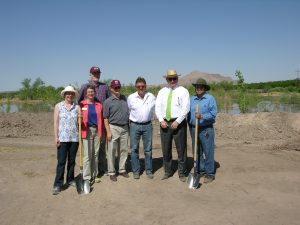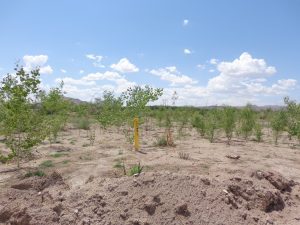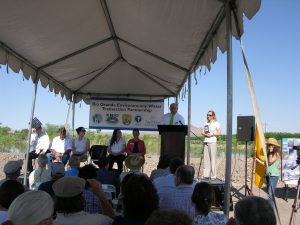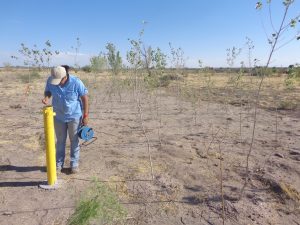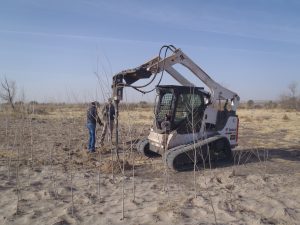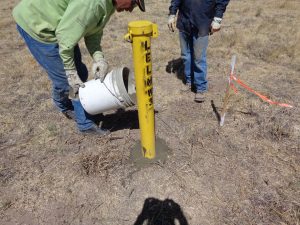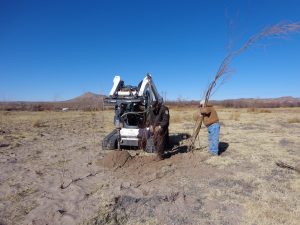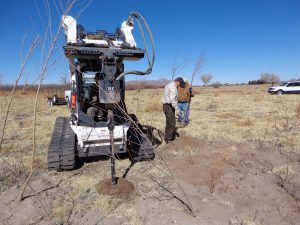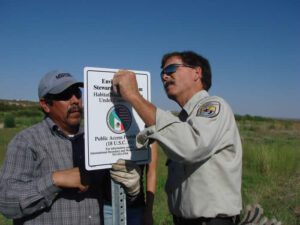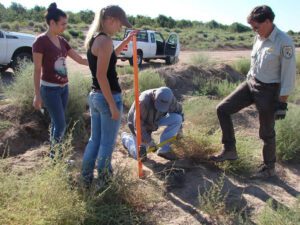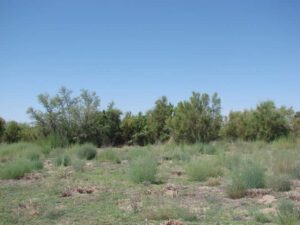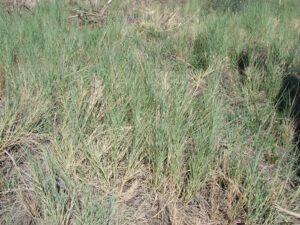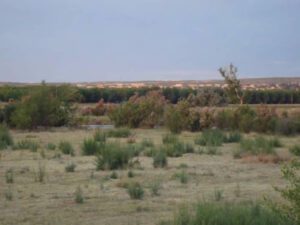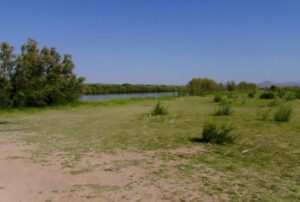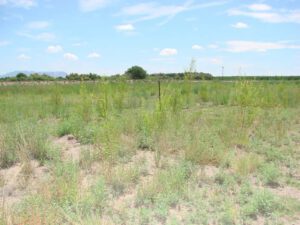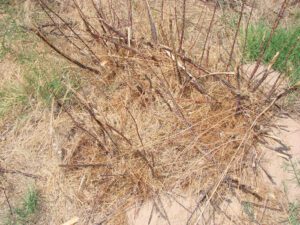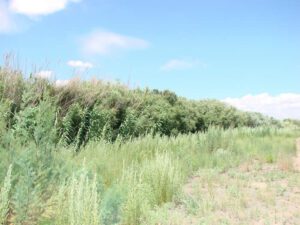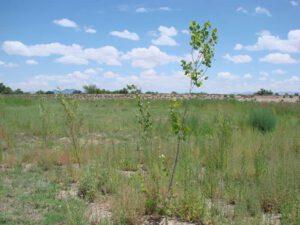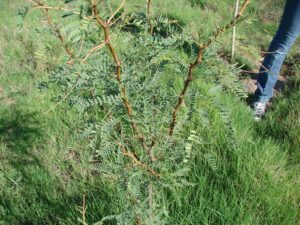Rio Grande Canalization Project – Record of Decision
In 1999, the International Boundary and Water Commission, United States Section (USIBWC) began the process to develop alternatives for an Environmental Impact Statement (EIS) on river management of the Rio Grande Canalization Flood Control Project (RGCP), in the 105-mile project area from American Diversion Dam in El Paso, TX up to Percha Dam near Arrey, NM. The RGCP EIS evaluated four long-term River Management Alternatives: a) No Action, b) Flood Control Improvement, c) Integrated Land Management, and d) Targeted River Restoration. The goals were to accomplish flood control, water delivery, and operation and maintenance activities in a manner that would enhance or restore the river ecosystem. Following an 8-year consultation process with stakeholders, the IBWC selected the Integrated Land management Alternative.
In June 2009, USIBWC Commissioner Ruth signed the Record of Decision (ROD) for the River Management Alternatives for the Rio Grande Canalization Project. The ROD committed the USIBWC to continuing the mission of flood control and water deliveries of the RGCP while implementing environmental measures that would enable the sustainable management of the river corridor over a ten-year period.
The ROD commitments included levee improvements, elimination of grazing leases, implementation of 553 acres of habitat restoration and 1,983 acres of managed grasslands, development of an Environmental Water Transaction Program to provide water for restoration, updating the River Management Plan, development of a channel maintenance monitoring program, mitigation measures for construction and management, and adaptive management.
During its ten-year timeframe, USIBWC worked to implement the ambitious goals set forth in the ROD. The USIBWC developed and established collaborative partnerships with multiple stakeholders and agencies, establishing many interagency agreements and memorandums of understanding to formalize the collaborative partnerships. ROD activities would not have been possible without the support, commitment and collaboration from the many stakeholders who provided input, attended meetings, reviewed documents, conducted site tours, and pushed the progress, as well as partner agencies who implemented on-the-ground projects.
From 2009 to 2021, USIBWC and its partners planted over 122,000 native trees and shrubs at 22 habitat restoration sites on over 500 acres. Additionally, USIBWC has planted over 37,000 native trees and shrubs at several mitigation sites (Vado and Thurman I and II), totaling 8 acres that are separate form USIBWC ROD acreage.
USIBWC also identified 1,500 acres of floodplain areas that would no longer be mowed in order to implement the ROD’s managed grasslands. From 2016 to 2023, USIBWC has removed saltcedar in over 320 acres of these No Mow Zones. Saltcedar debris from No Mow Zones and restoration activities was mulched or burned via prescribed burns. Additionally, USIBWC phased out grazing leases in the RGCP.
USIBWC and its partners developed an Environmental Water Transaction Program which allowed the USIBWC to acquire nearly 48 acres of Elephant Butte Irrigation District (EBID)-administered surface water rights, with more in the works. USIBWC, the United States Fish and Wildlife Service (USFWS) and the EBID worked to construct irrigation infrastructure that allowed the supplemental irrigation of five habitat restoration sites, all of which target the creation of habitat for threatened or endangered species. USIBWC also installed and monitored a network of 55 shallow groundwater monitoring wells as well as established a monitoring protocol for habitat restoration sites and No Mow Zones.
The USIBWC also conducted two Endangered Species Act Section 7 consultations during the ROD implementation regarding potential impacts to threatened and endangered species resulting from ROD activities. USIBWC worked to implement reasonable and prudent measures set forth by the USFWS and incorporate the measures into project activities and the River Management Plan.
The USIBWC collaborated with key stakeholders to develop several iterations of the River Management Plan, establish channel maintenance policy, and come to agreements on priorities and actions for the management of the river corridor. USIBWC incorporated pending ROD commitments into the River Management Plan.
As part of the channel maintenance plan, USIBWC resurveyed 160 established cross sections and numerous new cross sections in targeted locations requiring sediment removal in order to identify and justify channel maintenance priorities. USIBWC completed a Channel Maintenance Alternatives Study that helped develop the Channel Maintenance Plan and led to the construction of sediment basins at Thurman I and II Arroyos in Hatch. USIBWC also initiated the Sediment Control Initiative Federal Workgroup.
The USIBWC conducted outreach throughout the ROD timeframe to inform stakeholders and the public on USIBWC activities. The agency is committed to meeting its statutory requirements for the operations and maintenance of the RGCP while sustainably managing the river corridor to maintain habitat and address stakeholder concerns and implement adaptive management strategies via the continued implementation of the River Management Plan.
Crow Canyon A and B near Hatch, NM
Broad Canyon near Radium Springs, NM
Leasburg Extension Lateral Wasteway #8 (LELWW8) north of Las Cruces
Mesilla East near Mesilla, NM
Main Documents
05/2023 - Saltcedar Removal in the No-Mow Zones in the Rio Grande Canalization Project, Hatch, NM [15 MB]
04/2022 - USIBWC Riparian Habitat Restoration Monitoring Notes and Photographs Summer 2021.
10/2021 - Final Environmental Assessment Aquatic Habitat Restoration in the Rio Grande Canalization Project Sierra and Dona Ana Counties, New Mexico and El Paso County, Texas [14 MB] | Appendices [34 MB]
02/2021 - Final Mitigation Report for Riparian Habitat Compensatory Mitigation for Thurman I and II Sediment Basins [11 MB] | Appendices [11 MB]
03/2020 - Restoration of Riparian Trees and Shrubs on the Rio Grande Canalization Project (arcgis.com)
06/2019 - Final Report on the Ten Year Implementation of the ROD with Appendices [45 MB]
04/2019 - Final Report Monitoring Well Reconstruction / Rehabilitation Report [11 MB]
11/2018 - Rio Grande Environmental Water Transaction Program: Providing Water for Restoration (arcgis.com)
10/2018 - Irrigation of Riparian Habitat Restoration along the Rio Grande Canalization Project (arcgis.com)
11/2017 - Map Showing Active USIBWC Habitat Restoration Sites [262 KB]
08/2017 - Final Biological Opinion [730 KB]
12/2016 - River Management Plan, Final Report [12 MB]
10/2015 - Channel Maintenance Alternatives & Sediment-transport Studies for RGCP - Final Report [10 MB] | Appendix A through C [22 MB] | Appendix D through F [17 MB] | Appendix G through R [34 MB]
06/2015 - Berino East and West Restoration Site Final Monitoring Report [11 MB]
11/2014 - River Management Plan [3 MB]
10/2014 - Groundwater Monitoring Well Installation and Groundwater Level Monitoring Report [36 MB]
08/2012 - Biological and Conference Opinion [1 MB]
10/2011 - Final Biological Assessment [3 MB]
10/2011 - Site Implementation Plans [7 MB]
10/2010 - Depths to Groundwater at Restoration Sites [5 MB]
08/2010 - Soils Survey Resource Report [7 MB]
06/2009 - Record of Decision (EIS) [222 KB]
03/2009 - Final Conceptual Restoration Plan [9 MB]
09/2007 - Baseline Report FLO-2D Modeling [14 MB]
06/2004 - Final Environmental Impact Statement - River Management Alternatives [2 MB] | Appendices [2 MB]


